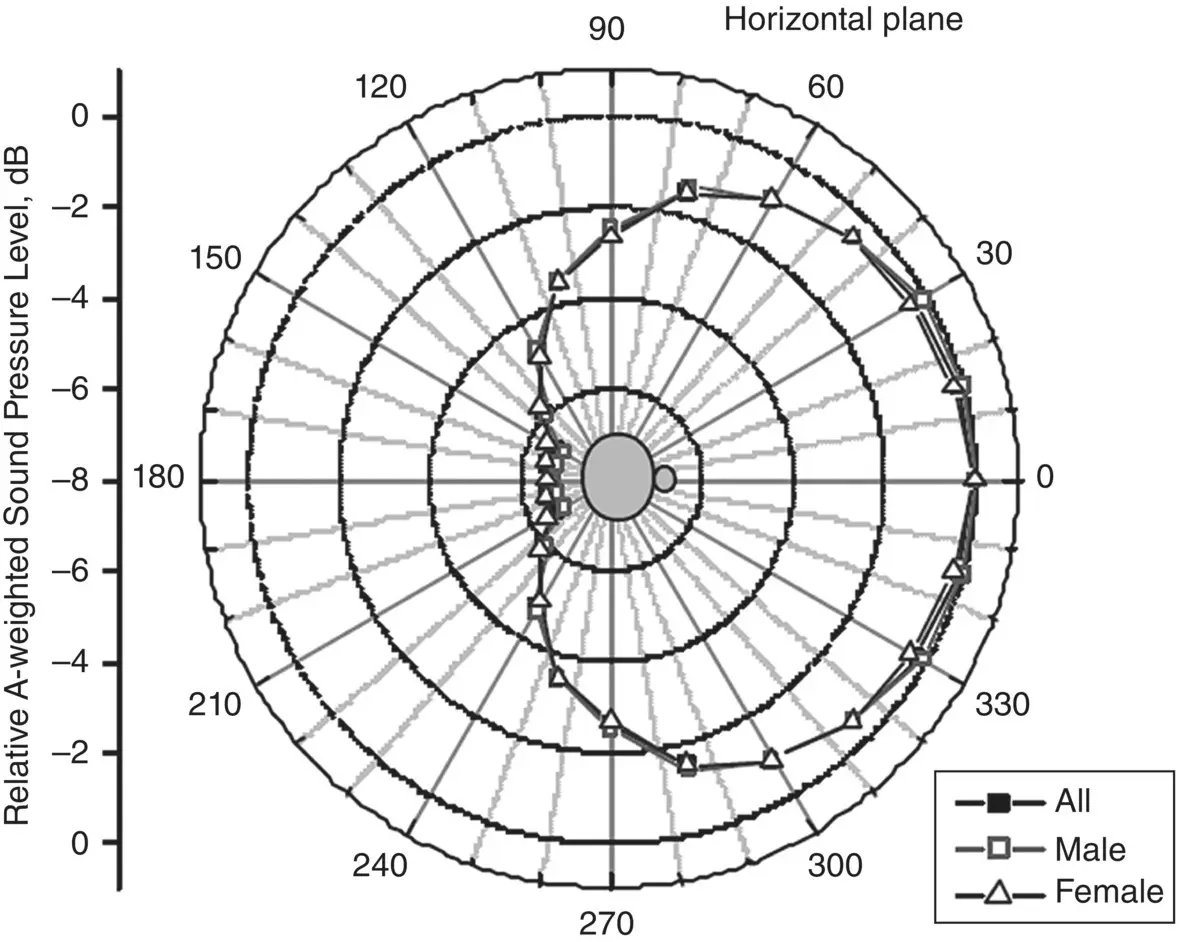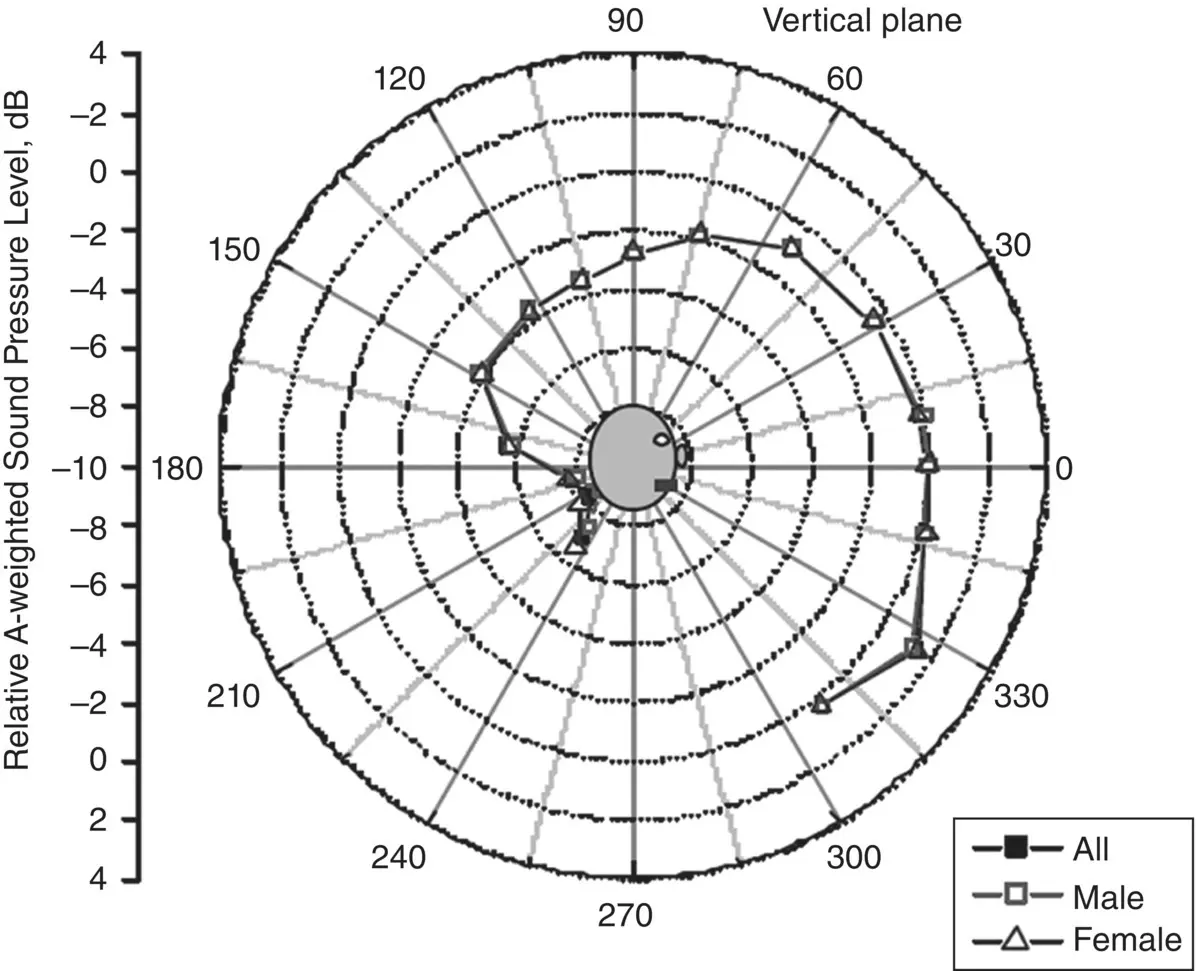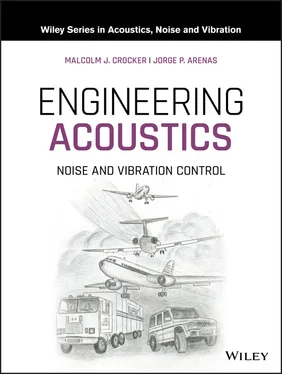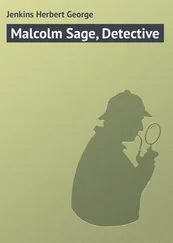Table 4.3 Male voice speech sound pressure levels +12 dB at 1 m from lips for both one‐third‐ and one‐octave bands. These levels represent the speech peaks that contribute to intelligibility. The voice peak sound power levels, L W,pk, can be evaluated by adding 10.8 to the above values as shown for octave bands.
| Center frequency, Hz |
L p,pk(one-third-octave) |
L p,pk(octave) |
L W,pk |
| 200 |
67.0 |
|
|
| 250 |
68.0 |
72.5 |
83.3 |
| 315 |
69.0 |
|
|
| 400 |
70.0 |
|
|
| 500 |
68.5 |
74.0 |
84.8 |
| 630 |
66.5 |
|
|
| 800 |
65.0 |
|
|
| 1000 |
64.0 |
68.0 |
78.8 |
| 1250 |
62.0 |
|
|
| 1600 |
60.5 |
|
|
| 2000 |
59.5 |
62.0 |
72.8 |
| 2500 |
58.0 |
|
|
| 3150 |
56.0 |
|
|
| 4000 |
53.0 |
57.0 |
67.8 |
| 5000 |
51.0 |
|
|
Since speech is emitted from the mouth, it is not surprising to find that the acoustic radiation from this small aperture set in a larger object (the head) is subject to fairly strong directivity effects. These directivity effects become more marked at high frequencies. Figures 4.26and 4.27show the relative A‐weighted sound pressure levels for the human voice in the horizontal and vertical planes, respectively. These experiments were conducted by Chu and Warnock in 40 adults, 20 male and 20 female [61]. Directivity effects can become important for audience members seated at the end of the front rows of an auditorium, since they will receive considerably less of the direct sound at high frequencies. This can considerably reduce the intelligibility of speech.

Figure 4.26 Directivity patterns for the human voice in a horizontal plane.
(Source: From Ref. [61] with permission.)

Figure 4.27 Directivity patterns for the human voice in a vertical plane.
(Source: From Ref. [61] with permission.)
1 1 Palmer, J.W. (1993). Anatomy for Speech and Hearing, 4e. Philadelphia, PA: Lippincott Williams & Wilkins.
2 2 Crocker, M.J. (1974). The ear, hearing, loudness and hearing damage. In: Reduction of Machinery Noise (ed. M.J. Crocker), 43. West Lafayette, IN: Purdue University.
3 3 Crocker, M.J. (1998). Handbook of Acoustics, 1083–1138. New York: Wiley.
4 4 Paul, P.V. and Whitelaw, G.M. (2011). Hearing and Deafness: An Introduction for Health and Education Professionals. Sudbury, MA: Jones and Bartlett Publishers.
5 5 Gulick, W.L., Gescheider, G.A., and Frisina, R.D. (1989). Hearing: Physiological Acoustics, Neural Coding, and Psychoacoustics, 2e. New York: Oxford University Press.
6 6 Tysome, J. and Kanegaonkar, R. (2016). Hearing: An Introduction & Practical Guide. Boca Raton, FL: CRC Press.
7 7 Welch, B.L. and Welch, A.S. (1970). Physiological Effects of Noise. New York: Plenum Press.
8 8 Wada, H. (2007). The ear: its structure and function, related to hearing. In: Handbook of Noise and Vibration Control (ed. M.J. Crocker), 277–285. New York: Wiley.
9 9 Silman, S. (1984). The Acoustic Reflex: Basic Principles and Clinical Applications. London: Academic Press.
10 10 Stevens, S.S. and Warshofsky, F. (1980). Sound and Hearing, rev. ed. Morristown, NJ: Time‐Life.
11 11 Fletcher, H. and Munson, W.A. (1933). Loudness, its definition, measurement and calculation. J. Acoust. Soc. Am. 5: 82–108.
12 12 Zwicker, E. (1960). Ein Verfahren zur Berechnung der Lautstarke (A means for calculating loudness). Acustica 10: 304–308.
13 13 Hassall, J.R. and Zaveri, K. (1988). Acoustic Noise Measurements. Naerum, Denmark: Bruel & Kjaer.
14 14 Stevens, S.S. (1961). Procedure for calculating loudness: Mark VI. J. Acoust. Soc. Am. 33: 1115.
15 15 ISO 532 (1975). Acoustics‐Method for Calculating Loudness Level. Geneva: International Standards Organization.
16 16 Kryter, K.D. (1985). The Effects of Noise on Man, 2e. Orlando, FL: Academic.
17 17 Fastl, H. (1997). Psychoacoustics of sound‐quality evaluation. Acta Acust. (Stuttgart) 83 (5): 754–764.
18 18 Fastl, H. and Zwicker, E. (2007). Psychoacoustics. Facts and Models, 3e. Berlin‐Heidelberg‐New York: Springer.
19 19 Gelfand, S.A. (2009). Hearing – An Introduction to Psychological and Physiological Acoustics, 5e. Boca Raton, FL: CRC Press.
20 20 Hawkins, J.E. and Stevens, S.S. (1950). The masking of pure tones and of speech by white noise. J. Acoust. Soc. Am. 22: 6–13.
21 21 Blauert, J. and Jekosch, U. (1997). Sound‐quality evaluation – a multi‐layered problem. Acta Acust. (Stuttgart) 83 (5): 747–753.
22 22 Fastl, H. (2005). Psycho‐Acoustics and sound quality. In: Communication Acoustics (ed. J. Blauert), 139–162. Berlin: Springer.
23 23 Moore, B.C.J. (2012). An Introduction to the Psychology of Hearing, 6e. Bingley, UK: Emerald Group Publishing.
24 24 Luce, R.D. (1993). Sound & Hearing – A Conceptual Introduction. Hillsdale, NJ: Lawrence Erlbaum Associates.
25 25 Neuhoff, J.G. (ed.) (2004). Ecological Psychoacoustics. London: Elsevier, Academic.
26 26 Durrant, J.D. and Lovring, J.H. (1995). Bases of Hearing Science, 3e. Baltimore, MD: Williams & Wilkins.
27 27 Moore, B.C.J. (ed.) (1995). Hearing. San Diego, CA: Academic.
28 28 Tobias, J.V. (ed.) (1970). Foundations of Modern Auditory Theory, vol. I. New York: Academic.
29 29 Martin, M. and Summers, I. (1999). Dictionary of Hearing. London: Whurr.
30 30 Schubert, E.D. (ed.) (1979). Psychological Acoustics, Benchmark Papers in Acoustics, vol. 13. Stroudsburg, PA: Dowden Hutchinson and Ross.
31 31 Zwicker, E. (1984). Dependence of post‐masking on masker duration and its relation to temporal effect in loudness. J. Acoust. Soc. Am. 75: 219–223.
32 32 Stevens, S.S., Volkmann, J., and Newman, E.B. (1937). A scale for the measurement of the psychological magnitude pitch. J. Acoust. Soc. Am. 8: 185.
33 33 O'Shaughnessy, D. (2000). Speech Communication: Human and Machine, 2e. Piscataway, NJ: IEEE Press.
34 34 Egan, J.P. and Mayer, D.R. (1950). Changes in pitch of tones of low frequency as a function of the pattern of excitation produced by a band of noise. J. Acoust. Soc. Am. 22: 827.
35 35 de Boer, E. (1962). Note on the critical bandwidth. J. Acoust. Soc. Am. 34: 985.
36 36 Beranek, L.L. and Ver, I.L. (1992). Noise and Vibration Control Engineering. New York: Wiley.
37 37 Mills, C.H.G. and D.W. Robinson (1961) The subjective rating of motor vehicle noise. The Engineer 30 June.
38 38 Shaw, E.A.G. (1996). Noise environments outdoors and the effects of community noise exposure. Noise Control Eng. J. 44 (3): 109–119.
39 39 Priede, T. (1971). Origins of automotive vehicle noise. J. Sound Vib. 15: 61–73.
40 40 Feldtkekker, R. and Zwicker, E. (1956). Das Ohr als Nachrichtenemofanger, 82. Stuttgart: S. Hirzel.
41 41 Zwicker, E. (1961). Subdivision of the audible frequency range into critical bands (Frequenzgruppen). J. Acoust. Soc. Am. 33: 248.
Читать дальше














